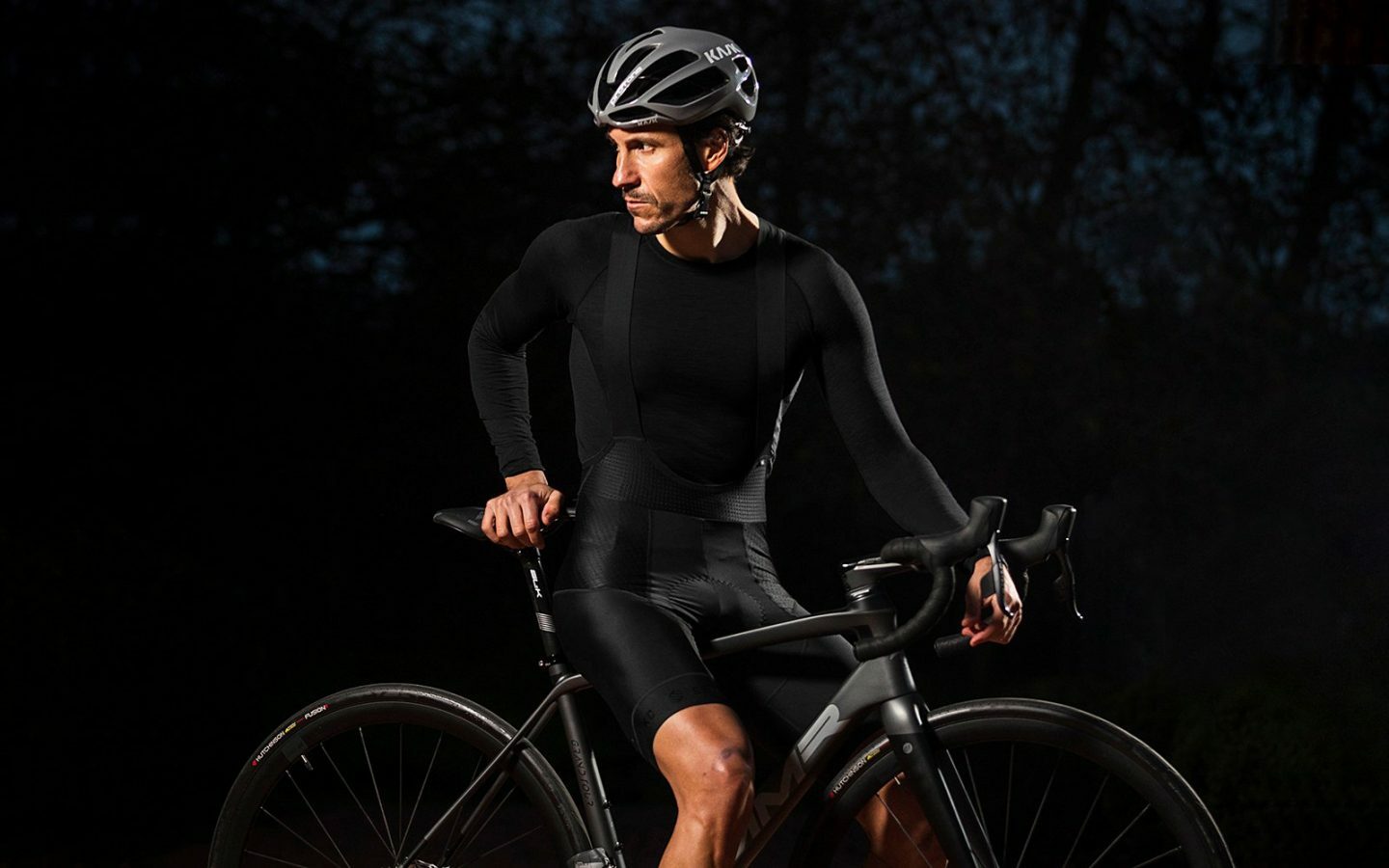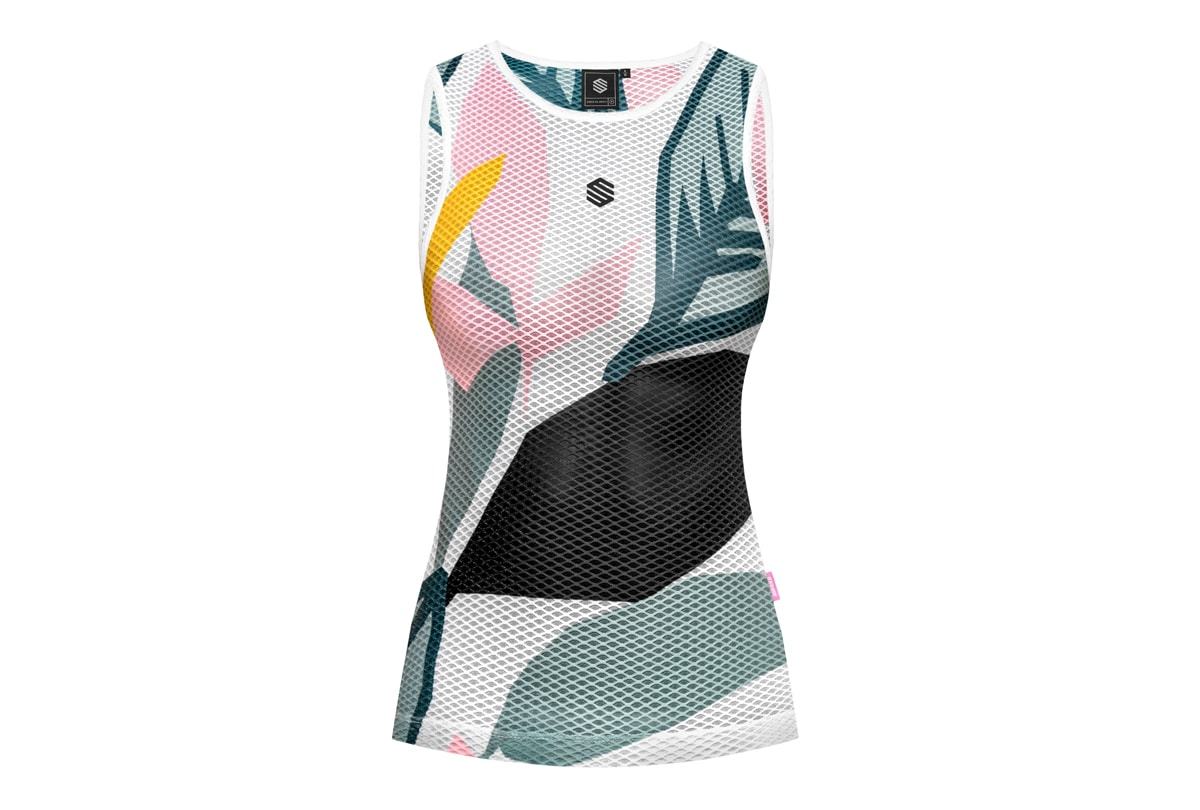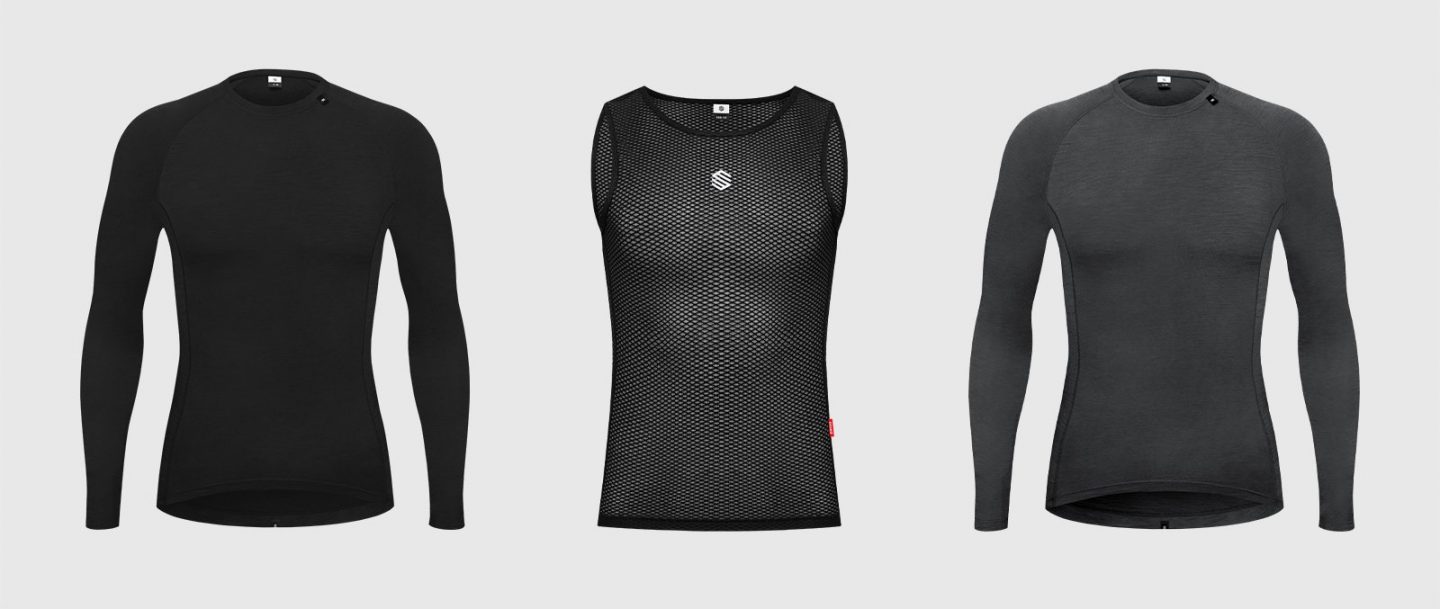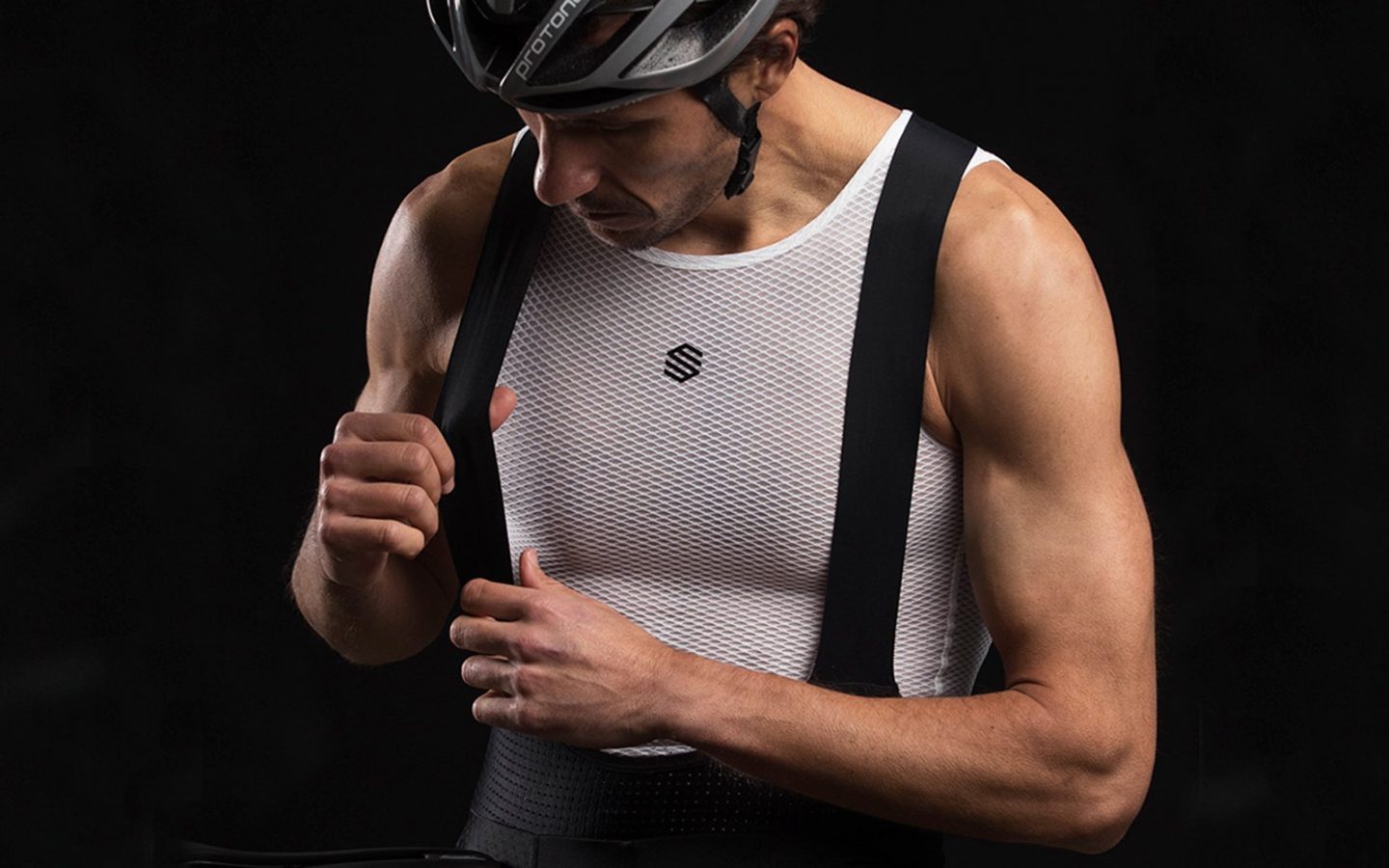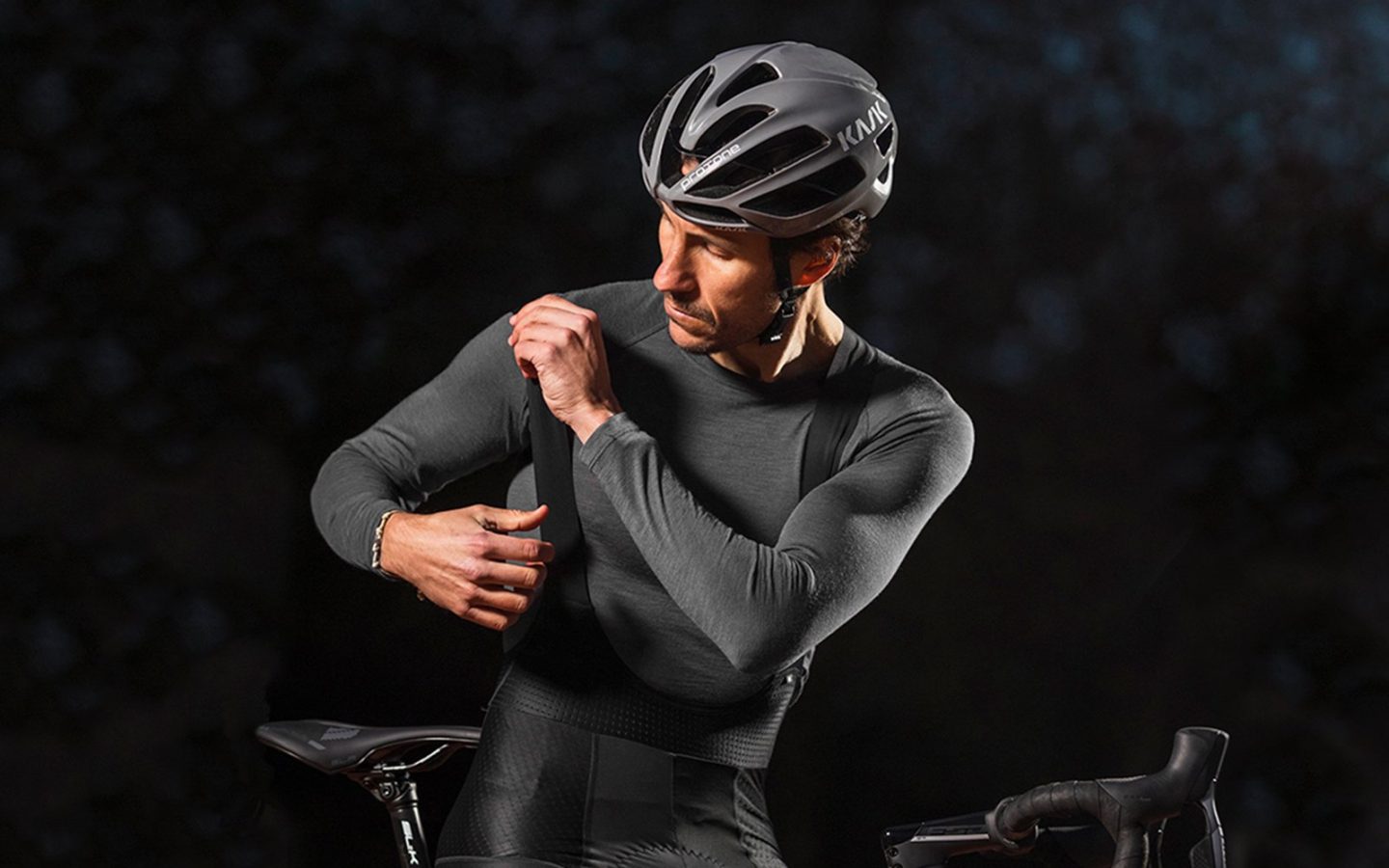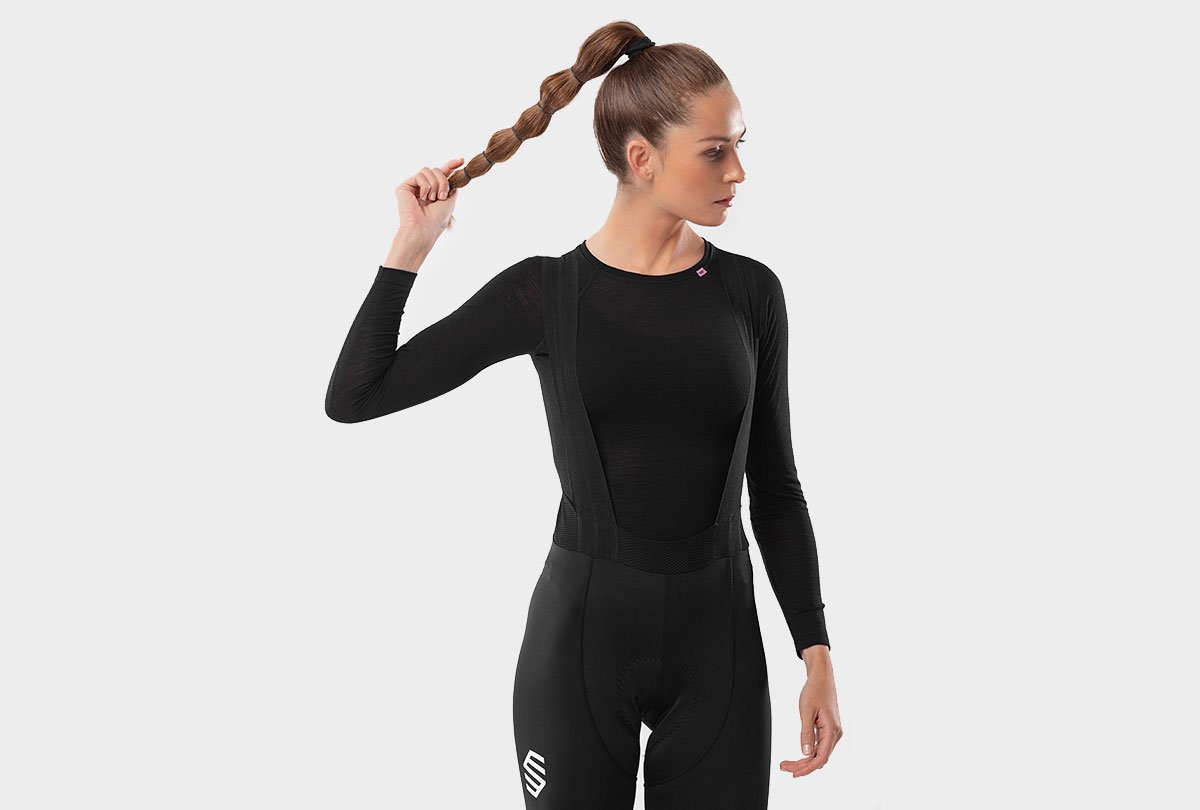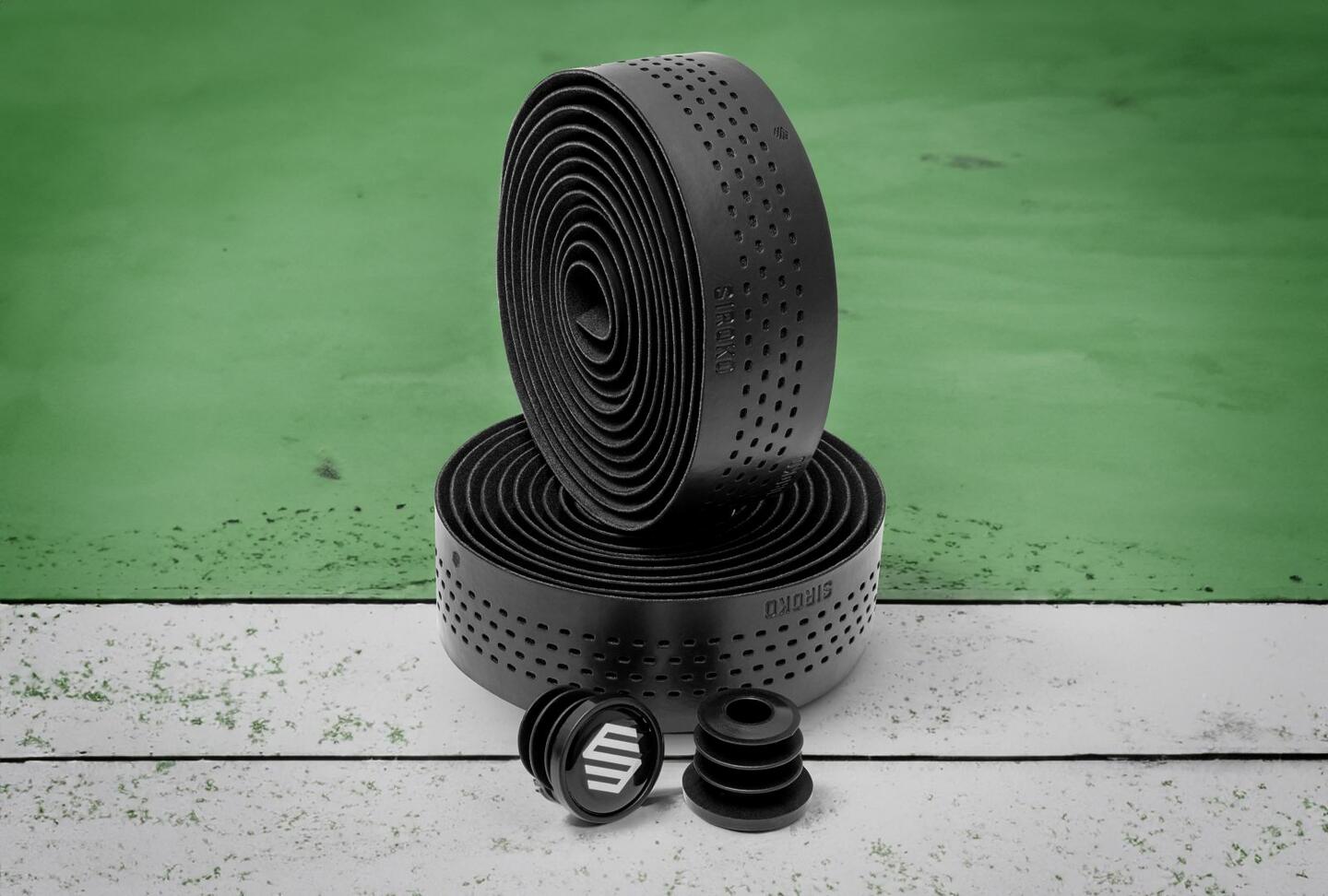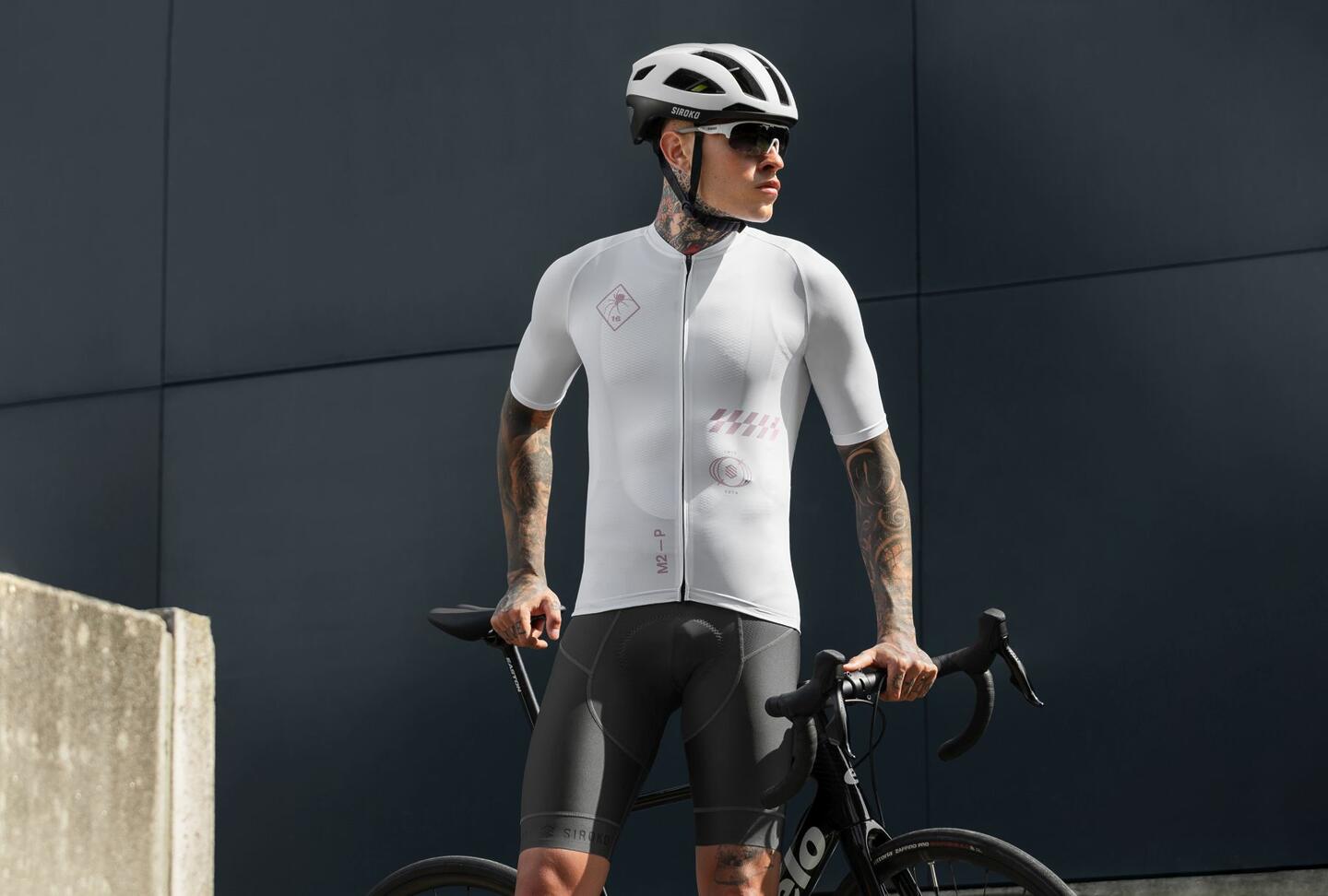We have already talked about the importance of base layers in our previous article on What to wear in winter to protect your core. This time we are going to get into a little more detail and explain different base layer options from Siroko. Here is a short guide you can easily apply to other brands, as the differences between manufacturers are minor and based mainly on designs and finishes.
What is a base layer in cycling?
A base layer is the first garment touching the skin. It must be breathable, quick-drying, well-fitting, and comfortable, considering that it has two jobs:
- Absorb sweat and wick away moisture in order to keep your skin dry.
- Regulate body temperature.
To reach these two goals this item creates a thin layer of air that protects us from the cold during the winter and keeps our skin dry and fresh during the summer. That is why they must fit snugly so that the fabric is always touching the skin, while being comfortable to wear at the same time. They must help improve movements during workouts and prevent chafing.
Types of base layers
For starters, there is a distinction between base layers for women and for men. We won’t be including sport bras in this category so that we can – quite literally – stick to our base layers.
There are three types according to fabric:
- Synthetic fibers either with antibacterial and anti-odor treatment or without it. They dry up quite fast.
- Merino wool. Natural fabric with antibacterial properties. It takes longer to dry up.
- Blend of merino wool and synthetic fibers. It’s particularly well-fitted, lightweight, and quick-drying.
According to sleeve length there are also three types:
- Long-sleeved
- Short-sleeved
- Sleeveless
The most common combinations for both men and women are:
- Sleeveless base layers made of mesh type synthetic fabric.
- Short-sleeved base layers made of mesh type synthetic fabric.
- Short-sleeved base layers made of merino wool or merino wool + synthetic fiber blend.
- Long-sleeved base layers made of merino wool or merino wool + synthetic fiber blend.
When to use a base layer in cycling
Each type of base layer is designed to be used in certain situations:
- Sleeveless base layers made of mesh fabric are perfect for temperatures higher than 15 ºC and up until 25-30 ºC. Most cyclists use them even on hot summer days to feel more comfortable by wearing something under the suspenders or as protection during a long descent. This is the base layer you should put on when using your indoor bike trainers at home.
- Short-sleeved base layers made of mesh fabric can also be used under the same temperature range as the previous one, given that the main difference between the two is just the sleeve length. The great thing about this type of base layer is that it wicks away moisture from sweat much better than a cycling jersey; that means it enhances breathability, helps cool down and keep the body dry.
- Both short and long-sleeved merino wool base layers can be used from -5 ºC upwards, or at least until you feel like you’re starting to boil inside. It is not the most suitable option for summer days over 20 ºC but it all depends on your personal preferences and how sensitive to low temperatures you are.
- Keeping a base layer in one of the pockets of your cycling jersey can be useful as you can simply put it on while on a break during a long route or on a long descent. It keeps the body from cooling down excessively by maintaining body heat and absorbing sweat.
And yes, we are talking about cycling base layers here, but no worries, we’re not gonna tell on you if you decide to wear it on other occasions (such as doing other sports or outdoor activities). Even merino wool base layers can be used as an undergarment on a daily basis thanks to their excellent thermal properties as well as their great – yet not too tight – fit. If you haven’t tried wearing them when you’re not on your bike we suggest you do; you won’t be disappointed.
How to use base layers in cycling
A base layer must be in close contact with the skin, and for that reason it is made to be worn under the bib shorts suspenders and not over them. This way you can have the base layer perfectly adjusted to your body.
Both short-sleeved and sleeveless layers can be used with any kind of garments, it’s all up to you. They can be paired with both short- and long-sleeved cycling jerseys, light jackets, or even winter jackets. A long-sleeved base layer fits better with a long-sleeved jersey, a light jacket or a winter jacket, as it would not look good under a short-sleeved jersey, aesthetically speaking.
Key features in a base layer
We have already mentioned the first one: A base layer must be close-fitted so that it fits snugly to the skin.
The less seams the fabric has, the better. Seams must be hidden in places where they don’t limit our movements and/or can create any kind of discomfort. They must be on the outside and not on the inside, as well as flat enough to avoid friction, chafing, etc.
The neck has to be round and not too tall so that it doesn’t stick out of the jersey. If you want extra protection for your neck in winter there are some other designs that have a taller neck and can be used under a thermal winter jacket.
Regardless of the sleeve length, make sure your base layer has a diagonal seam from underarm to collarbone (raglan sleeve). As opposed to those sleeves where the seam is just above the shoulder, the raglan sleeve doesn’t limit our movements. Moreover, it adjusts better to the position of the arms when riding a bike.
How to take good care of your base layer
Whether it is made of synthetic fiber or merino wool, it is recommended to wash the base layer as soon as possible after the workout. The sooner the better, especially those made of synthetic fibers because even garments with antibacterial and anti-odor treatments lose their properties with time. If you don’t wash this type of fabric it’ll end up becoming a Petri dish for all kinds of bacteria and a source of bad smell. This does not happen to merino wool, but as it is often combined with synthetic fibers, give it a wash if you don’t want to end up saying: “I love the smell of bacteria in the morning”.
Base layers are extremely delicate garments so be careful when using the washing machine, as they can get snagged inside the drum and caught onto zippers or velcro from other garments. Hand-wash your base layers or use a washing bag.
And watch out as some fabrics, especially merino wool, can shrink when washed in hot water. Check manufacturer’s recommendations so you don’t end up with a kids size base layer.
If cold water is not enough to get rid of dirt and bad smell there are special laundry products for odor removal stronger than Mathieu Van der Poel final attack at Strade Bianche in 2021.
